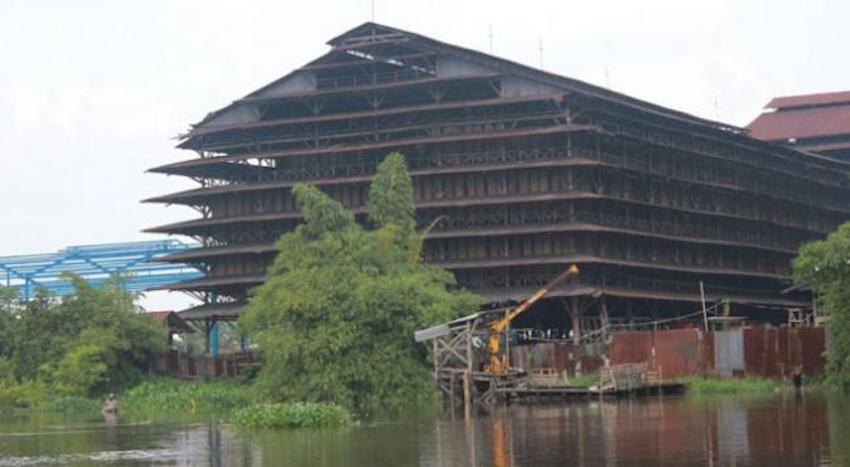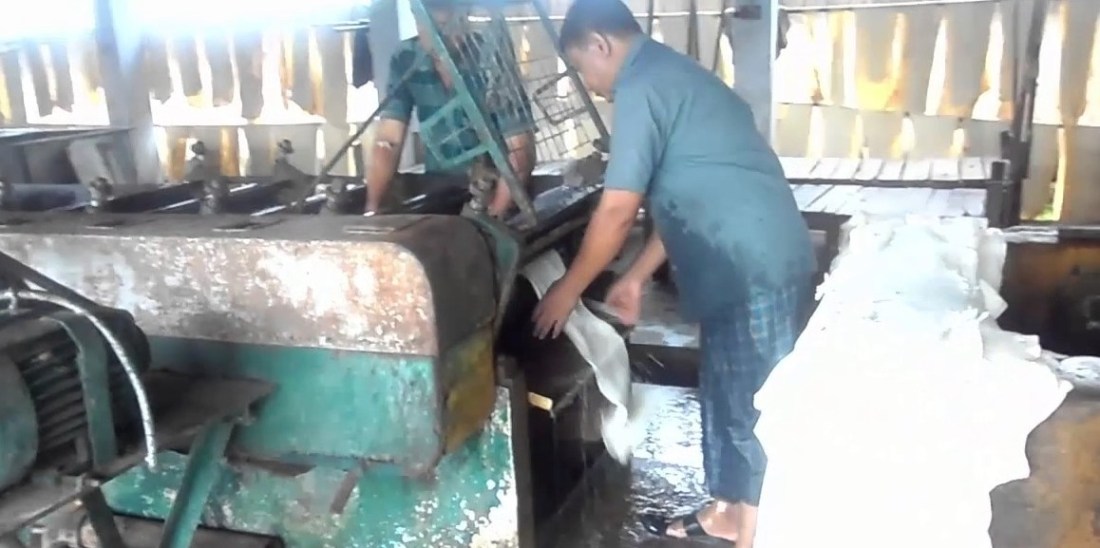
Pekanbaru, Sumatra 2010
Pekanbaru, Sumatra is not really a tourism destination. We lived on the Chevron Camp of Rumbai for six years. We tried to develop a few day trips here and there in order to entertain friends and family who were willing to visit us.
As you cross the Siak River bridge from Pekanbaru to Rumbai an odd structure looms on the edge of the river. If the winds are just right, the distinctive smell of rawly tapped rubber fills your nostrils. Every time we drove to Pekanbaru and back to Rumbai, I wondered what goes on in this mysterious place, The Crumb Rubber Factory.
In April 2010, I had the opportunity to have a look at this process. My driver at the time was Pak Sudaryo, who manoeuvred the busy streets of Pekanbaru to get us where we needed to go. I had been touring Pekanbaru with my mother-in-law Doris and our friend Fran, when I decided to add the rubber factory to my tour agenda.
You may not know that the rubber tree is indigenous to the Amazon Rainforest, and was brought to tropical Asia from Brazil by the British in the 1870’s. Sadly, most of the jungle of Southeast Asia has been replaced by rubber tree plantations and palm oil plantations. I personally find rubber trees less offensive than the palm oil plantations. Part of that is that the latter is much more lucrative so there are vast tracts of palm oil plantations throughout Indonesia, Malaysia and Thailand, the top three producers of palm oil in the world.
For me, these vast tracts of palm oil plantations are repulsive. A rubber tree grove, on the other hand, has its own natural beauty. The canopy of the trees creates a shaded clearing with uniform rows of stately trees. OK, maybe I’m getting a little carried away, but I like the rubber trees.

The sap from the rubber tree is latex, the primary source of natural rubber. When the trees are five to six years old spiral incisions are made up the trunk of the tree to tap the latex into small plastic bowls or coconut shells. The older the tree, the more latex is expelled. The congealed sap from the bowls or coconut shells is stuck together to form crude blocks of latex which are sent to the rubber factory for processing. It is the latex in this raw state that emits the noxious odor.

Because the raw rubber is piled in front of the Pekanbaru factory, the front entrance to the factory is an eyesore and the smell is overpowering – a cross between a pig barn and the rotting garbage similar to the smell of the nuisance grounds in my hometown of Rosetown. Once we got inside the factory walls, the smell seemed to recede. I don’t know how much of this was just getting used to it.
Stepping inside the factory doors was like stepping back in time; like a nineteenth century Dickens novel, a crude depiction of the Industrial Revolution. The machinery looks antique, but it matches the specs of the new items for processing latex. The process is essentially coagulating the latex into sheets under controlled clean conditions, using formic acid. The final product is called crumb rubber.

The first step in the factory is to break down these blocks into “crumbs”. A conveyor belt lifts the blocks to a grinding machine that pulverizes the rubber into small chunks. Then the small chunks drop into cleaning pools. In the Pekanbaru plant, barefoot men in shorts stood in the cleaning pools and stirred the crumbs manually. This had a real nineteenth century feel to it!

The crumbs are lifted in conveyor baskets and fed into a grinder to break them down further. They are then fed into a press to make a crude sheet of rubber. These pressed sheets go through a heating chamber, and then are hung out to dry. I believe the heating chamber is a purification process that is done prior to the hanging. The hanging to dry is definitely the coolest part of the whole operation. With the possible exception of the guy standing in the mystery solution, guiding the bits along.


Ultimately the processed crumb rubber is packaged in classy containers for shipping. The crumb from the Pekanbaru plant is exported all over the world. We saw containers marked for shipping to the US and Japan. Most of the crumb rubber is processed to manufacture automobile tires, but is also used for other latex products.
And this completes our Crumb Rubber Factory tour. I came away with significant learnings. Some of my learning has to do with how rubber is harvested and processed for industrial use. The other learning is that I am fortunate to have never had a career in the rubber industry.
Ahh yes. I remember it well!
LikeLike
Unfortunately, Fran, I lost the photos we took that day.
LikeLike
Interesting story and photos, Norm…thanks!
LikeLiked by 1 person